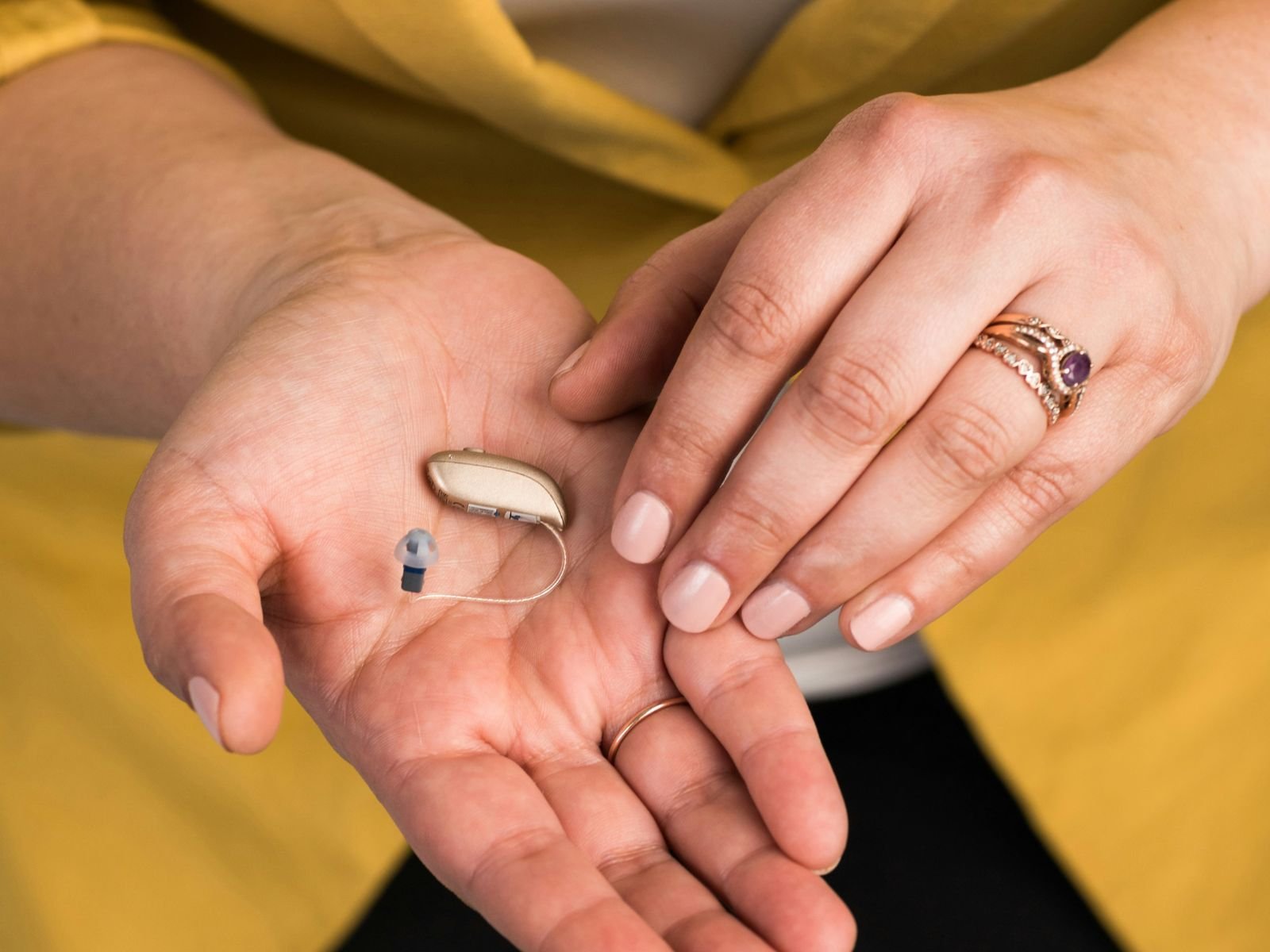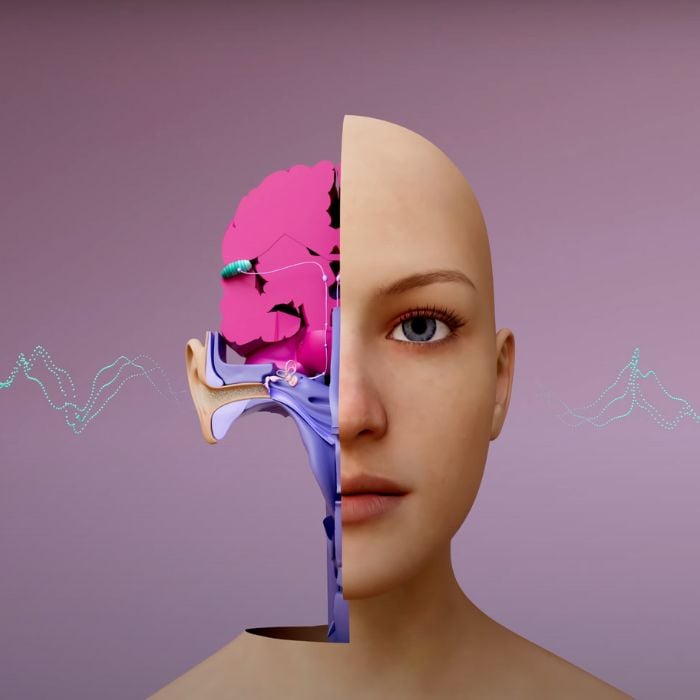Tinnitus is a condition that affects millions across the globe, and many of those who experience it are unaware of the connection to hearing loss. As an audiologist with years of experience in treating patients with tinnitus, I've come to realize how crucial it is to understand its intricate relationship with hearing loss.
For those who struggle with the unrelenting sounds of tinnitus, clarity and knowledge are the first steps towards effective management and, in some cases, finding lasting relief. In this article, we will explore the ties between hearing loss and tinnitus, looking into how they interplay, understanding diagnosis, effective treatment methods, and vital strategies for prevention.
How Tinnitus Works
Tinnitus is a perception of noise or ringing in the ears that is not caused by an external sound source. It may manifest as a high-pitched ring, hissing, buzzing, or even roaring, and can be intermittent or constant, mild or severe. But where does this phantom sound come from?
Tinnitus has many causes. While the mechanisms behind tinnitus will vary based on the underlying cause, research using fMRI imaging has helped us learn more about tinnitus and the brain. However, there is still a lot we don't know about tinnitus. One thing we know for sure is that tinnitus does not stem from one specific brain area but rather is spread throughout different brain regions.
So, what exactly causes tinnitus? Tinnitus is a complex process, and sometimes visuals tell the story more effectively than descriptions. Here's a short video we created that explains one of the leading theories about how tinnitus works:
Tinnitus and Hearing Loss: The Link
Tinnitus is most frequently associated with some degree of hearing loss, a connection that might seem paradoxical at first to many patients. How can hearing a sound, such as tinnitus, be related to losing the ability to hear? The explanation lies in the brain's response to the weak or missing incoming auditory signals.
When the brain lacks these signals, it essentially "craves" what it's missing. To compensate for this absence, the brain increases the spontaneous neural firing rate. This heightened activity creates the perception of sound where there is none, resulting in the phantom noises associated with tinnitus. Understanding this mechanism is crucial for both patients and healthcare providers, as it lays the groundwork for effective treatment strategies.
Tinnitus can often serve as an early warning sign of hearing loss. Typically, high-frequency hearing loss develops gradually, unfolding over years, which means it might not be immediately apparent to those affected. Contrastingly, tinnitus has a way of quickly capturing one's attention. This disparity underscores the importance of not dismissing tinnitus as merely an annoyance. (Though of course for some it can be quite bothersome.) Recognizing tinnitus early can lead to more timely and effective interventions for any underlying hearing loss, highlighting the critical nature of paying attention to the signals our bodies send us.
Tinnitus Without Hearing Loss
Individuals with what's deemed "normal" hearing can also experience tinnitus. This phenomenon can arise for several reasons. Exposure to loud sounds, for instance, can precipitate tinnitus even before any auditory damage becomes apparent through conventional hearing tests, such as an audiogram. This is because the initial stages of hearing impairment might not immediately reflect as a loss in the standard testing range.
Furthermore, the definition of "normal" hearing encompasses a broad spectrum. Therefore, a person's hearing thresholds may deteriorate within this "normal" range, indicating a decline from their previous hearing baseline. Although this deterioration doesn't register as a hearing loss in the strict clinical sense, it represents a significant change for the individual. Understanding these subtleties enriches our grasp of tinnitus, acknowledging its complexity beyond the binary framework of hearing loss presence or absence.
Other Possible Causes
Tinnitus episodes can be triggered by factors not directly related to the auditory system. Stress, anxiety, depression, temporomandibular joint (TMJ) disorders, and even benign tumors on the hearing nerve (acoustic neuromas) can lead to phantom sounds in the ears.
Diagnosis
Accurate diagnosis of tinnitus is critical as it guides the path towards effective management and, where possible, treatment. Audiologists and otolaryngologists use a combination of patient history, physical examinations, and hearing evaluations to diagnose tinnitus.
Comprehensive History and Examination
During the consultation, a healthcare professional will seek to understand the nature of the tinnitus sound, its duration and frequency, and any associated symptoms, such as vertigo, ear fullness, or pain. A thorough physical examination of the head, neck, and ears is also conducted to identify any visible or palpable issues contributing to the condition.
Hearing Tests
An audiologist may use various tests to get a comprehensive understanding of an individual's hearing health. These assessments, taken together, offer a detailed picture of hearing health and relationship to tinnitus.
- Pure Tone Audiometry: This test measures how well you can hear at each frequency. You'll listen to sounds through headphones.
- Bone Conduction Audiometry: This test transmits sounds to the inner ear through the bones of the skull. It helps to differentiate between sensorineural hearing loss (originating from the inner ear or neural connections to the brain) and conductive hearing loss (involving the outer or middle ear).
- Speech Testing: This assesses the person's ability to hear speech clearly, helping to understand the practical implications of the hearing loss on daily communication.
- Tympanometry: This test measures the mobility of the eardrum (tympanic membrane) and middle ear health. You'll sit quietly while the equipment records responses from your ear. This test can identify issues like fluid build-up, Eustachian tube dysfunction, or eardrum perforations that might be causing conductive hearing loss.
- Otoacoustic Emissions (OAEs): This test checks the function of the outer hair cells in the cochlea. By inserting a tiny probe into the ear canal, sounds are played, and the ear's response is recorded. Absent or abnormal emissions can indicate peripheral cochlear hair cell damage, which may precede hearing loss on the audiogram.
Advanced Imaging
While rare, there are reasons to further investigate symptoms. In cases of sudden or unilateral (asymmetric) hearing loss, the presence of dizziness, or when tinnitus is pulsatile, your doctor may order imaging like Magnetic Resonance Imaging (MRI) for further analysis.
An MRI can reveal detailed images of the brain and inner ear, providing insights into possible causes such as acoustic neuromas (benign tumors on the hearing nerve), structural abnormalities, or vascular issues that traditional tests might miss. Thus, these imaging tools are invaluable in ensuring a comprehensive assessment and facilitating the most appropriate treatment plan for affected individuals.
Treatment Options for Tinnitus

Treating tinnitus requires an individual approach, addressing both the tinnitus itself and any underlying hearing loss or contributing factors.
Hearing Aids and Sound Therapy
For patients with tinnitus and hearing loss, hearing aids can be a game-changer. By amplifying external sounds, hearing aids can often mask the tinnitus and provide a sense of relief. Over time, the brain becomes accustomed to hearing the sound it 'craves' and the tinnitus sound can lessen as a result. Some patients like to use white noise machines or specialized tinnitus sound generators, especially at night or in quiet. Masking noise can help lessen the distraction of the tinnitus when you need to focus or drift off to sleep.
Bimodal Neuromodulation
Bimodal neuromodulation represents an innovative approach to tinnitus treatment, merging auditory and somatosensory stimulation to interact with the neural circuits thought to be involved in tinnitus perception. This dual stimulation, typically involving sounds and tactile feedback, aims to recalibrate the brain's response to tinnitus.
Recent clinical trials have demonstrated its potential, notably in reducing tinnitus severity for many participants. For those seeking a deeper understanding of how bimodal neuromodulation compares with other treatment options, read more about a comparison of two options here. This link offers a comprehensive analysis, helping individuals make informed decisions about their tinnitus management strategies.
Cognitive Behavioral Therapy (CBT)
CBT can be instrumental in helping patients manage the emotional and mental aspects of tinnitus. By altering thought patterns and developing coping strategies, CBT empowers patients to reduce the impact of tinnitus on their daily lives. This type of therapy helps to address the emotional component the tinnitus response. By managing feelings of stress, anxiety, and depression, those with tinnitus may experience a significant reduction in the severity of their symptoms.
Lifestyle Changes
In addition to medical treatments, modifying certain lifestyle factors can significantly influence the perception and severity of tinnitus. An area particularly deserving attention is stress management. High levels of stress are not only detrimental to general health but can also exacerbate tinnitus symptoms. Effective stress-reduction techniques, such as meditation and mindfulness, encourage a state of relaxation and can help diminish the intrusiveness of tinnitus.
Preventing Tinnitus
Preventative measures are crucial in avoiding the onset of tinnitus, particularly for those who are at higher risk due to their occupation or lifestyle.
Protect Your Hearing
One of the most effective ways to prevent the onset of tinnitus is by consistently using hearing protection in environments with elevated noise levels. Whether you're at work in industrial settings, enjoying concerts, or participating in noisy recreational activities, safeguarding your ears is crucial.
Exposure to high levels of noise is one of the predominant culprits behind hearing loss and tinnitus. By using earplugs or earmuffs designed to reduce noise, you can do a lot to protect your hearing health. This proactive measure is a simple yet powerful step toward maintaining long-term hearing health and quality of life.
Monitor Ear Health
Regular hearing tests are an essential part of maintaining auditory health, particularly for individuals frequently exposed to noise in their work or recreational activities. A hearing evaluation provides a baseline of your hearing ability and helps detect any early signs of hearing loss or tinnitus. Early detection through testing along with strategies for preserving hearing health can go a long way. An audiologist can recommend a testing schedule based on your particular risk factors and exposure levels, ensuring that any potential issues are addressed promptly and appropriately.
Healthy Lifestyle Choices
Adopting safe listening habits when using headphones is another crucial strategy in preventing tinnitus. In our digitally connected world, it's increasingly common to use headphones for extended periods, whether for work, leisure, or during commutes. Setting the volume to a safe level — generally no more than 60-70% of the maximum volume — and limiting listening time can significantly mitigate the risk of hearing damage. Overexposure to loud sounds through headphones can lead to noise-induced hearing loss, a common trigger for tinnitus. By being mindful of volume levels and taking regular breaks to give your ears a rest, you can enjoy your favorite audio content without compromising your auditory health.
Final Thoughts
Living with tinnitus can be challenging, and the constant presence of noise that others cannot hear can lead to frustration and distress. However, it's crucial to remember that you are not alone in this struggle. The advances in understanding and treating tinnitus today offer hope and a pathway toward better quality of life.
Through a combination of innovative treatments, lifestyle adjustments, and a supportive community, many have found significant relief and regained a sense of normalcy. Whether you're just beginning to notice symptoms or have been managing tinnitus for years, the strategies outlined above present opportunities to enhance your well-being.






